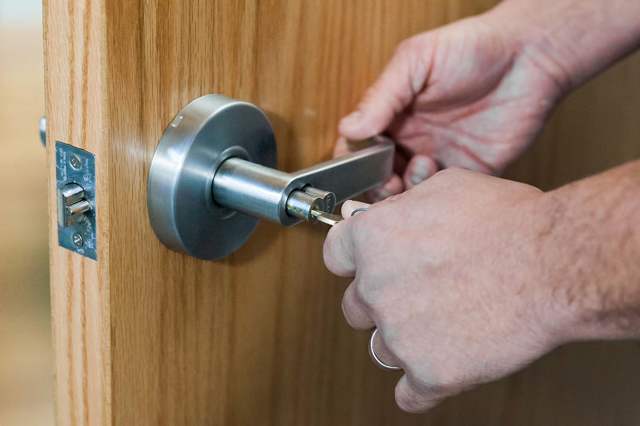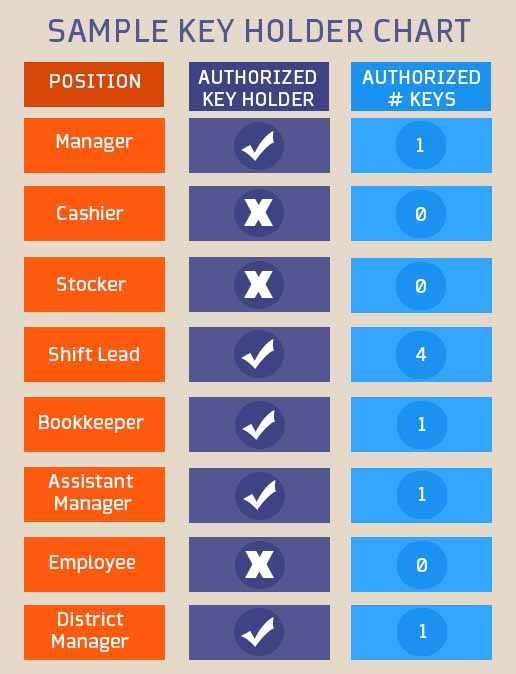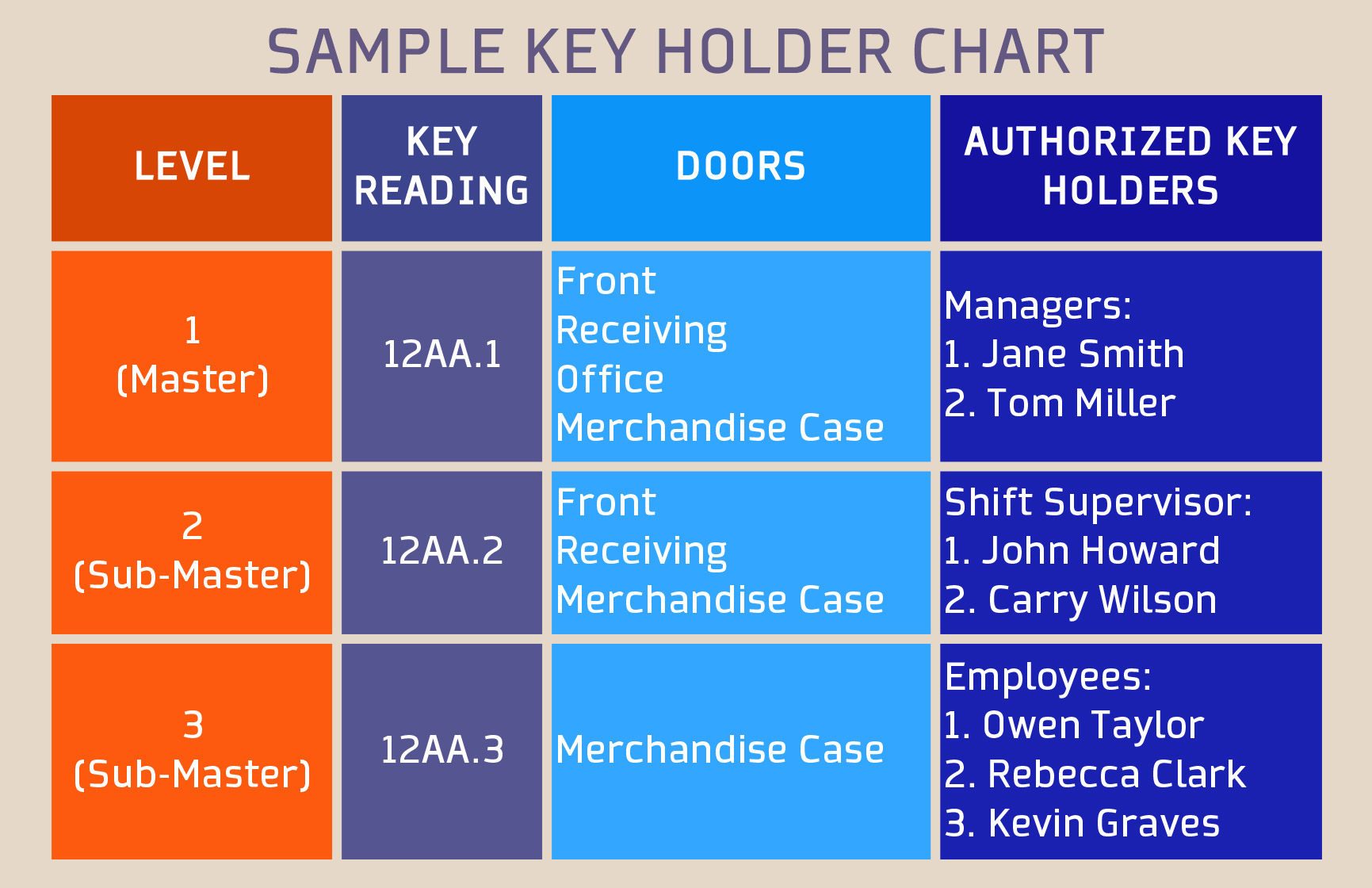Key systems are often times an easily overlooked aspect of facilities and loss prevention. Once they are established, the “plug and chug” mentality can sometimes take over unless there is an “incident.” Un fortunately, this often ends up compromising the integrity of the system. We have had many customers ask us about the best (and easiest) way to manage their key system:
fortunately, this often ends up compromising the integrity of the system. We have had many customers ask us about the best (and easiest) way to manage their key system:
What policies should I put in place in order to effectively manage my key system with minimal effort?
There are five main policies that you should put in place:
- Who is allowed to carry keys?
- How many keys should be issued per store?
- How are key orders placed?
- When is the key system installed on new store openings?
- What do you do with keys when a store closes?
Who Carries the Keys?
 Be certain that everyone involved is aware of what positions within the company are authorized to carry keys. This makes key orders, rekeys, and system integrity easier to manage.
Be certain that everyone involved is aware of what positions within the company are authorized to carry keys. This makes key orders, rekeys, and system integrity easier to manage.
If you are on a master system, this step is crucial. Ensure everyone in your organization who utilizes the key system – from top level corporate management down to the store level – understands not only who is authorized to carry keys, but who is authorized to carry each level of key. This ensures that each individual maintains the appropriate level of access to your facilities.
Many organizations choose to document who carries keys, especially if the company uses a master key system. Such charts clarify who is authorized to carry each type of key and also assist in re-ordering the correct keys. This image depicts a sample key holder chart for the example outlined in the master key system example. This chart will need to be updated by store management and/or the LPM or DM responsible for that store.
How Many Keys Should Be Issued per Store?
 It is generally not recommended to issue a large number of keys – overabundance makes it easy to lose track of keys and damages the integrity of your system. Conversely, too few keys can slow down store operations.
It is generally not recommended to issue a large number of keys – overabundance makes it easy to lose track of keys and damages the integrity of your system. Conversely, too few keys can slow down store operations.
To determine the number of keys to issue, think about the purpose you want your key system to serve. This will help determine how many keys to issue. If you want your key system to provide a tight level of security, you should limit the number of keys issued. If you prefer to use the alarm system as the main security feature, issuing a larger number of keys may be appropriate. As shown in this chart, you may want to create a chart listing each position of employment at the location, determine if that position should be an authorized key holder, and then use that to determine how many keys should be ordered per store.
How Are Key Orders Placed?
After creating these two policies, make sure that you and your key system vendor have a clear understanding of who is authorized to order keys, and detail an order process that your entire organization understands. You may not want your shelf stockers to be able to gain access to your keys. Setting up this policy ensures that unauthorized personnel cannot gain access to keys. Once the process is established, inform your team internally, and your vendor will carry out the compliance aspect. If someone who isn’t authorized to order a key calls your vendor or a step in the process has been skipped, your vendor will instruct the requesting person on the proper steps to follow.
When is The Key System Installed on New Store Openings?
Installing your key system early in the construction process allows all tradesmen access to your key system. Doing so risks the integrity of your system, especially if it is unrestricted. As such, it is recommended to use construction cores during construction, and then just before the store is turned over, install the key system. This will help maintain the integrity of the system and will allow you, rather than your General Contractor, to have control over who has the keys to each store.
What Do You Do With Keys When a Store Closes?
The answer to this question will largely be guided by who owns the building. If the building is leased, you will likely be required to leave the keys with the owner. It is important for the building owner to know that if the location is on a restricted or proprietary system, they will not be able to obtain key copies. As such, you should advise them to rekey the location.
If corporate owns the building, what you do with the keys will be determined by how your organization is structured. The initial inclination is to send the keys to corporate; however, this does no good if your regional office is responsible for the sale of the building as they will need access to the store and all of the doors in it. You should send the keys to the responsible office. If all keys are not returned, it would behoove you to rekey the location regardless of the type of system you are on to ensure that the location remains secure.
Enforcing the Policies
It is important to note that developing policies is only half of the battle. The best thought-out policies will do you no good if you do not have a sound enforcement structure. We recommend relying on your key system vendor to help enforce your policies. That will save you lots of time and headache in the long run.
